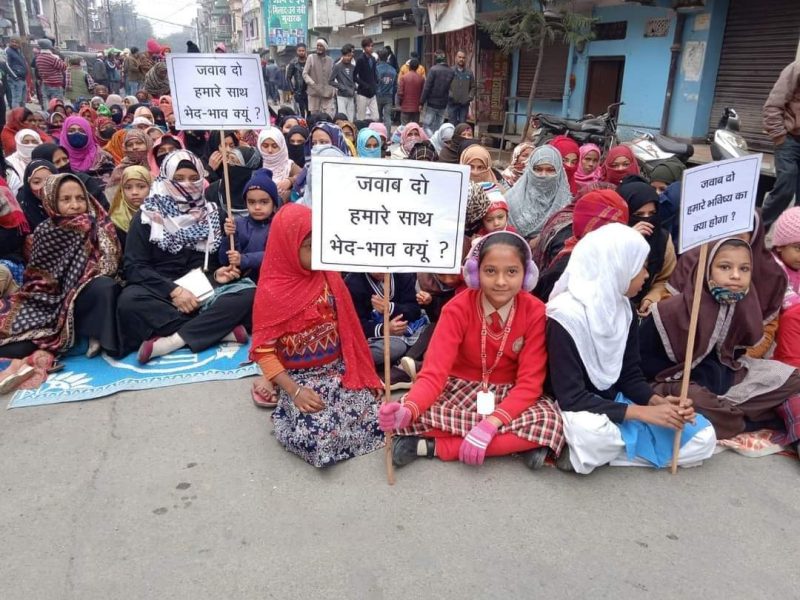
Haldwani encroachment: What the row is about and why people are protesting

The Supreme Court on Thursday (January 5) stayed an Uttarakhand High Court order directing the removal of encroachments from 29 acres of railway land in Uttarakhand’s Haldwani. The SC order had brought relief to some 50,000 people who faced the prospect of becoming homeless overnight. So, what is the row about? Here is an explainer.
The HC order
The Uttarakhand HC order on December 20 came as a bolt from the blue for the 4,500 families that have been living in Haldwani’s Banbhoolpura area for decades. According to some accounts, some of these families have been living in Dholak Basti, Gafoor Basti, and Indira Nagar colonies of Banbhoolpura since 1910.
Of the 50,000 affected people, around 90 per cent are Muslims. The affected people comprise elderly people, pregnant women, and some 15,000 children. The area houses 15 schools, including four government ones, 26 Anganwadi centres, four temples, 10 mosques, two mazaars, a bank, and a graveyard. A government primary school is apparently over a century old.
1. In Uttrakhand, Haldwani over 4500 houses have been issued notice by Railways stating to vacate their premises by 7th Jan. What is pertinent is that it's a Muslim area with 50,000 affected residents and state govt which claimed the land as its before HC in 2017 is now quiet.
— Kawalpreet Kaur (@kawalpreetdu) January 3, 2023
A week’s notice
The worst part was that the court directed that a week’s notice be given to these people to vacate the land before the encroachments are demolished. The settlers were given a deadline of January 9.
Delhi-based lawyer Kawalpreet Kaur took to Twitter to share some facts about the ground situation. According to her tweets, the Railways has no document to prove that the land belongs to it, or any to suggest that it intends to use the land anytime soon. “There has been NO demarcation of the entire area,” she tweeted on January 3.
Also read: Encroachments eat into Bengaluru’s Hesaraghatta grasslands, imperil wildlife
Also, the state government had earlier claimed that the land was its. In 2018, the ruling BJP had in fact brought in an ordinance to stop the demolition of unregularized slums and regularise them instead. Petitioners who appealed against the HC order in Supreme Court argued that this ordinance itself protected them from eviction.
People with papers
Of the 50,000 affected citizens, around 40,000 reportedly have voter ID cards and many have Aadhaar cards as well. Many have ration cards and papers to prove they pay property tax and electricity bills, too.
According to Kaur’s tweet, people “have valid and registered sale deeds, transfer deeds from the state government with entries in revenue showing it as ‘Abadi’ land.” Many residents questioned how schools and hospitals could come up in an area if it had been encroached upon and why nothing was done for so many years.
Also, some 1300-odd residents are already fighting cases in district/civil courts under the Public Premises Act, disputing the Railways’ ownership of the land, tweeted Kaur. Many have been in possession of their land since before Partition, she added.
Also read: Railway issues notices to mazar, temple in Agra over land encroachment
In such circumstances, thousands of locals erupted in protest against the December 20 HC order and filed a petition in SC. The locals have alleged persecution and discrimination because they belong to the minority community. The SC bench, putting a stay on the HC order, has observed that it is a “human issue” and some workable solution needs to be found. The matter will be heard again on February 7.
(With agency inputs)

